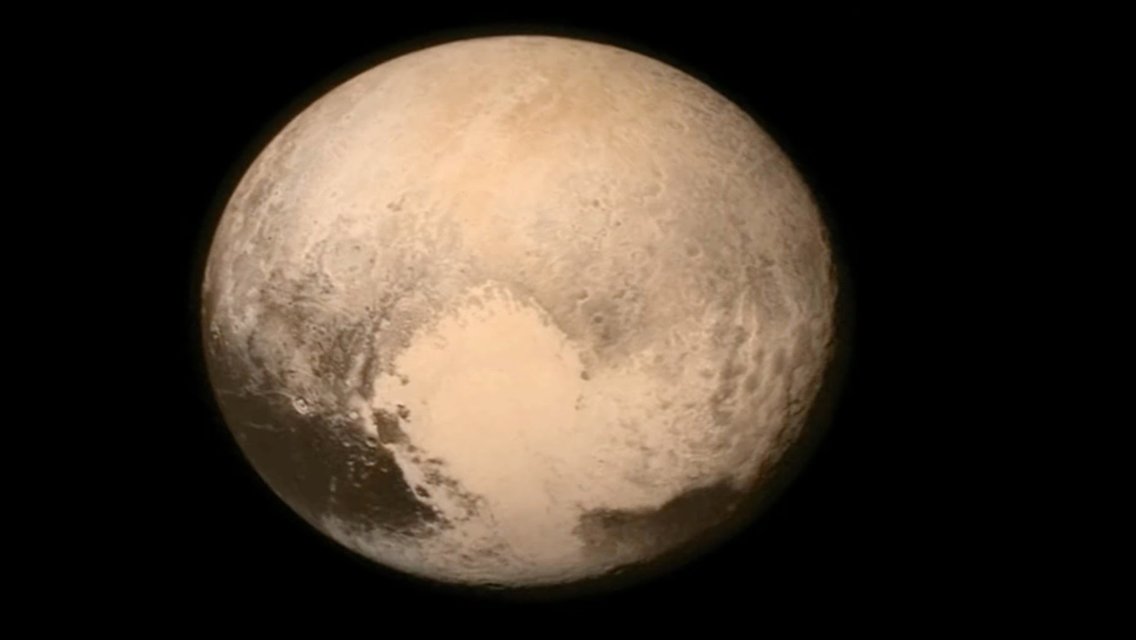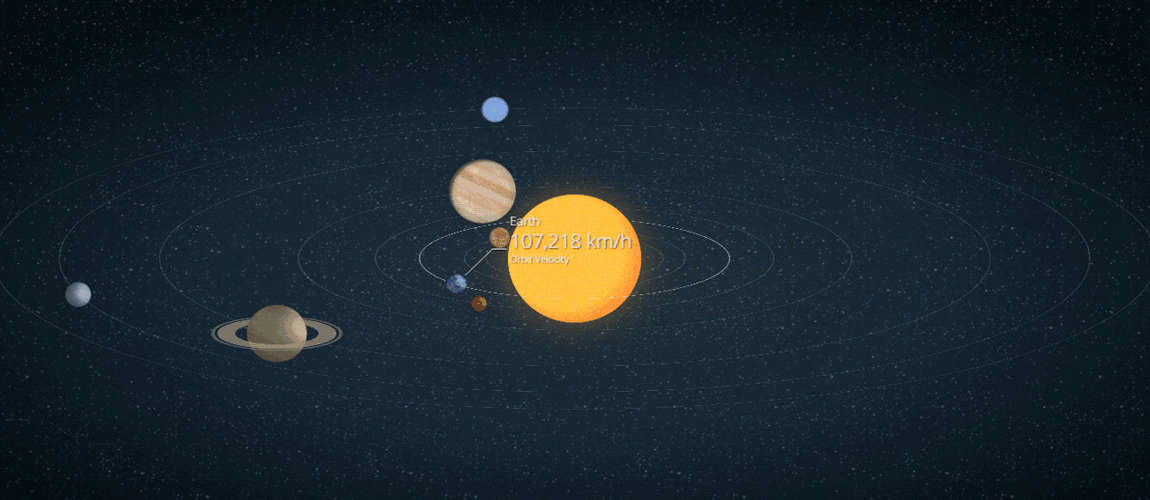
What made human amazed in the old ages are the bright stars appearing like moving between the stars in the sky, and studies of antiquities indicate that the Babylonians or the Mesopotamian civilization that lived in the third millennium BC was the first in following the movement of those stars and called them as the Aster Planets to distinguish them from stars, and they used the Greek expression (Planet) in the modern astronomy.
The old civilizations known five planets of the nine we know in the modern astronomy; which are Mercury, Venus, Mars, Jupiter and Saturn, which may be seen in the naked eye as bright stars. The brightest planets are Venus then Jupiter and Mars; especially when increasing brightness when approaching earth once every two years, but it is difficult to see Mercury because of being so close to the sun; thus it may be only seen for two hours after sunset or before sunrise.
The ancients had different illustration of the solar system from the modern one; as they thought that the earth was in the center of the solar system and that the moon, sun and other planets move around the earth. The famous Greek philosopher Claudius Ptolemy, who died in 150 AD, has set a huge encyclopedia that is called the Almagest, where he mentioned that the earth is located in the center of the solar system and that the moon, sun and other planets move around the earth.
The world accredited the module of Ptolemy for more than one thousand years until 1543 AD, until the famous polish mathematician Copernicus discovered that the earth is not the center of the solar system and that it moves in circle orbits around the sun just like the other planets; thus he admitted that the earth is a planet just like others and indicated that the moon is the only celestial body moving around the earth. I would like to confirm that the famous Arab scientist Ibn Al-Shater who died in 777 H / 1375 AD discovered that the sun is in the center of the solar system 170 years before Copernicus and even the English Orientalist David King confirms in his dictionary (Scientific Characters) that Copernicus depended in his studies on the results of Ibn Al-Shater and he confirmed in 1950 AD that several astronomic theories referring to Copernicus were take from Ibn Al-Shater and in 1973 AD, Arabic manuscripts were found in Poland, the state of Copernicus and it was discovered that he used to take from the Arabic manuscripts and referring them to him!
| Mercury | عطارد | 1 |
| Venus | الزهرة | 2 |
|
Earth |
الأرض |
3 |
| Mars | المريخ | 4 |
| Jupiter | المشتري | 5 |
| Saturn | زحل | 6 |
| Uranus | أورانوس | 7 |
| Neptune | نبتون | 8 |
| Pluto | بلوتو | 9 |
Studies conducted on the solar system since the period of Galileo, Newton and Kepler until the era of spaceships in the modern age made us aware of the general features of the solar system with regards to the planets’ orbits, mass, density, size, physical and geological characters and other information.
Distance of planets from the sun in kilometer, mile and astronomic unit
| Planet | Distance in kilometer | Distance in mile/ million | Distance in astronomic unit |
| Mercury | 57.9 | 35.96 | 0.387 |
| Venus | 108.2 | 67.2 | 0.723 |
| Earth | 149.6 | 92.9 | 1.00 |
| Mars | 227.9 | 141.6 | 1.523 |
| Jupiter | 778 | 483.3 | 5.2 |
| Saturn | 1427 | 886 | 9.45 |
| Uranus | 2869 | 1783 | 19.2 |
| Neptune | 4498 | 2794 | 30 |
| Pluto | 5900 | 3670 | 39.4 |
Planets’ Size
The person studying the sizes of planets will notice that the planets close to the sun are small compared to Mercury, Venus, Earth and Mars; then they considerably increase in size; as Jupiter is the hugest planet, with the size exceeding that of the earth by 1318 times! In case of gathering all eight planets in one; Jupiter would be bigger twice and half times! Then comes Saturn after Jupiter, followed by Uranus, Neptune, then Pluto the smallest in the solar system but it exists in the peripherals of the solar system and not included in the same rule whenever we approach the sun inside the Jupiter orbit or get far from the sun outside the Jupiter orbit.
Conjunction and Opposition
In the modern astronomy we use specific expressions for recognizing the location of planets in the sky relatively with determining the time of observing them with having different classifications of conjunction and opposition, which are:
- Conjunction
That means the alignment of two or more celestial bodies in the sky. When we look towards Jupiter and Mars was appearing in the sky on the same sight level; we see Jupiter with Mars in the same level or horoscope in the sky; thus we say they are conjunct.
The Conjunction expression is widely used when connecting the locations of planets or other celestial bodies such as the asteroids or the moon with the sun. in case of having a planet behind the sun for observer from earth; i.e. the sun is located between the earth and planet on the same level, then the conjunction in that case will be Inferior Conjunction, which happens with all planets and asteroids equally.
The other type is called Interior Conjunction, i.e. when the planet or the celestial body is between the sun and earth, which only happens with the closest planets to the sun, which are Mercury and Venus and the Interior Conjunction may not happen for planets with orbits outside that of the earth, as they are farther than earth from the sun.
Planets may not be seen when they are in both in the Interior and Inferior Conjunctions for being close to the sun and located on the level of sight for the observer from earth.
- Opposition
This means that the earth is located on one level between the sun and the celestial body whether it is a planet, comet, asteroid or the moon, and we notice that the body in opposition forms an angle of 180 degrees with the sun. In case the sun sets in the western horizon and one of the planets raise in the same moment from the east; then that means having a planet in opposition.
- Elongation
An expression means having the planet in the highest point reached in the horizon whether the eastern or western upon sunrise or sunset. This case is considered very important for observing the interior planets, which are Mercury and Venus, which may not be seen but at dawn, two hours before sunrise, which is called west elongation, and when seen after sunset it is called east elongation.
Planets Retrograde
In case of continuing observation of the external planets’ movement for a specific period of almost two months; we will notice that the planets are moving from the west to the east and they will seem like stopping in their orbits and then moving in the opposite direction, from the east to the west, and that movement continues for several days or weeks then it stops again and continue its usual path again, this was known as the retrograde movement. The phenomenon of Planet Retrograde happens as a result of the earth following the exterior planet, as it seems like the planet is fixed in its place while the earth precedes it, and that makes it look like going back, then the earth returns to its orbit in the opposite way as a result of moving around the sun from the other side, thus the planet seems like returning to its previous orbit. The process consists of the earth preceding the exterior planets in their orbit; thus far planets seem like changing their movement in the sky
The orbit of Jupiter is located directly outside the planets’ orbit and it is the fifth planet in distance from the sun. Jupiter is the biggest planets in size and mass; as it is bigger than the land by approximately 1330 times, and in case of gathering all eight planets in one then Jupiter will be bigger than then by 2.5 times. It seems that the old civilizations known that Jupiter is the giant planet and that’s why it is called Jupiter, the God of Gods, which is the common name in the modern astronomy. It is also the first gas planet in distance from the sun, as the previous ones are rocky and small, but Jupiter follows Saturn, Uranus and Neptune of gas planets.
General Features
The average distance of Jupiter from the sun is 778.3 million kilometer with the diameter of 142.984 kilometers, which is bigger than the diameter of earth by around 11 times and it moves around its axis within 9 hours, 55 minutes and 50 seconds. Because of its high axial velocity compared to its huge size; Jupiter looks flat when observed via telescope. It moves around the sun within 11 years, 10 months and 17 days; thus it is easy to see it bright in the sky with brightness not exceeding but the sun, moon, Venus and Mercury when it is in the closest point from the earth, which happens once every 15 years. The orbit of Jupiter tilts to the horoscopes’ circle by 1.3 degrees; i.e. appears close to the horoscopes’ circle in the sky, and because Jupiter is huge; the gravity on its surface reaches 2.5 times the gravity on earth, in case the person’s weight on earth is 50 kilograms; then on Jupiter the weight becomes 125 kilograms; thus it would not be possible to move there!
The escape velocity from Jupiter reaches 57.5 kilometers per second; i.e. around five times that of earth, which is 11.2 kilometers per second. The mass of Jupiter is 317.8 of that of earth; while density reaches 1.3 of that of water, and the temperature of Jupiter reaches -125 C.
The astronomic observation of Jupiter is very interesting; as you can see it clearly along with the strips in its gas sphere through the small astronomic telescopes, you may also see it along with the four moons of Galileo using the binocular used by the army, scout and hunters. Jupiter becomes clearer when observed by telescopes of medium size, and it is easy to follow it by astronomic amateurs as it is very bright in the sky and it is easy to look for it.
Astronomers discovered in 1950 AD through the radio telescope that Jupiter is considered a strong radio source, which indicates that it has a strong magnetic field that exceeds that of the earth by ten times. With its strong magnetic fields it affects the ten moons moving around it and on most planets, especially the close ones. The reason for that strong field is the metal nucleus inside along with the speed of moving around itself relatively to its size.
Discovering Jupiter
The historical resources indicate that the first to observing Jupiter using the telescope is the Italian (Galileo Galilei) in 1610 AD while Simon Marius might be the one who observed the planet with his telescope at the same time of Galileo. Galileo observed through his own telescope strips on the surface of the planet along with four moons moving around, called Galileo moons which are Io, Europa, Ganymede, and Callisto, and through the movement of moons around the planet he was able to recognize that the earth is not the center of the solar system rather than discovering that such planets are moving around the sun, which confirms the theory of Copernicus about sun centralization set in 1543 AD.
Pioneer-10 was the first spaceship arriving to the Jupiter on 3 December 1973 AD, and it moved around it by the distance of 131 thousand 400 kilometers, took 300 photos of the planet and conducted studies to its gas sphere and magnetic field. Then Pioneer-11 arrived to Jupiter on December 4th 1974 AD, i.e. after one year from the previous one. It moved around it by the distance of 46 thousand 400 kilometers, sent clear photos of the planet and conducted the same trials done by the previous one.
On September 5th 1977, Voyager-1 was launched and arrived to Jupiter on March 5th 1979, being close to the planet by 350 thousand kilometers. Voyager-2 was launched on August 20th 1977, i.e. sixteen days before the first one, and that refers to reasons from NASA. Voyager-2 arrived to Jupiter on July 9th 1979, i.e. later than the first one, although it was launched before it because of having different journey plan. It was close to Jupiter by 714 thousand kilometers and it did the same work of the first ship but it visited the moon Europa, which was not visited by the first one.
On October 18th 1989, Galileo spaceship was launched and it arrived to the planet in 1995, it entered the gas sphere of the planet and was able to study it along with its composition, thickness, temperature in different depths, magnetic field and other various studies. Then on October 6th 1990, Ulysses was launched and arrived Jupiter on February 8th 1992 after visiting the sun on its way; it was close to Jupiter by 378 thousand kilometers and was able to measure the magnetic field, gravity and other studies.
The Red Spot
When observing Jupiter in 1664 AD by the famous English astronomer Robert Hock, he noticed having red spot like a bird eye in the south area of its surface and since discovering the red spot, it was changing in brightness, size and movement, but the studies done by Voyager-2 showed that the red spot has the length of 40 thousand kilometers and width of 14 thousand kilometers, being located within the white clouds, i.e. within the higher layer of the planet. It does not keep one place on the planet, rather than moving in different directions, which indicates that it does not float on the planet surface just like the clouds floating in the gas sphere, whereas the astronomic observations indicated that it moved in the same direction of Jupiter between 1910 and 1942, then started to move in the opposite direction between 1942 and 1962. The clarity of the red spot differs from one period of time to another; as it used to be clear in 1962, 1963, 1973 and 1974 while completely disappeared in 1665, 1875, 1927 and 1936.
Various theories appeared to explain emergence of the red spot; one of the stipulates that a huge comet clashed into Jupiter and caused disorder in the gas sphere thus formed the red spot, and this also caused the red color. The other theory indicates that the red spot is a very agitated area because of continuous thunder and lightning and the reason of the red color is the phosphor generated because of sunrays on the phosphine sent from the planet center. Another theory expects that the red spot is a solid or semi-solid body that is floating in the external layer of the gas sphere and it may sink inside the gas sphere which causes being hidden for specific period and changing color for others. Some views mentioned that the red spot is an atmosphere phenomenon that is located in the cold gas sphere that emerged between horizontal streams moving from north to south from the southern tropical area of the red spot.
Ring of Jupiter
In March 4th 1979, Voyager-1 took photos for light rings around Jupiter located on the planet equator and consist of light atoms of dust and frozen ones. Those rings were observed from earth after five days of discovering them through voyager-1.
There are four small rings around Jupiter with thickness not exceeding one kilometer and moving around the planet every 7 hours. The width of the first ring reaches 6000 kilometer and of low brightness compared to other rings. The second ring is brighter with the width of 800 kilometers; i.e. much less than the first one, the third is an internal ring close to the planet surface being 50 thousand kilometers far above surface while the fourth ring surrounds the previous three
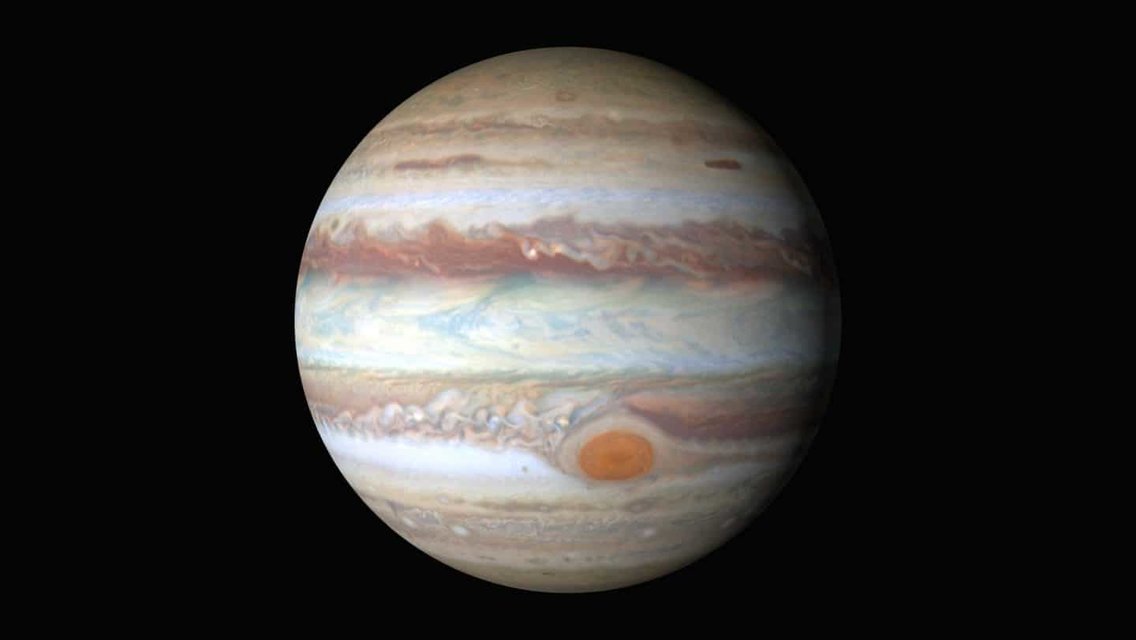
The planet of Saturn comes in the sixth rank in distance from the son, it is the God of agriculture for the Roman (Saturn) and the Godfather of the God Jupiter.
Saturn is considered one of the most beautiful planets ever; for having circles surrounding it, which appear through telescopes of medium-size in bright colors and attractive lines that are hard to be drawn by any artist. Saturn is the most far planet known before manufacturing astronomic telescopes and discovering the three moving planets of Uranus, Neptune and Pluto.
- Discovering the Planet of Saturn
Saturn may be seen in the naked eye as a bright star, and nothing makes it brighter than Sirius and Canopus, and the oldest observatories known were those made by the Mesopotamian population in 650 BC when they observed Saturn hiding behind the moon. The historical resources indicate that Saturn was observed by Copernicus in 1514 AD and it was in the Scorpio. It was also observed by Tycho Brahe on 18 August 1563 AD, when Jupiter was also related to Scorpio. The first one observing Saturn using telescope was the Italian Galileo Galilei in 1610 AD, but he couldn’t distinguish the circles in his intermediate telescope. He draw three balls adjacent to the planet from the sides according to the observed back then. Christian Huygen, born in Leyden in 1629 AD, followed the works of Galileo and was able to interpret the reality of the circles and he was able to draw them with indicating that they are thin and separated from the planet.
The astronomer Giovani Cassini indicated for the first time in history in 1675 AD that the circles of Saturn are not a sold body; as if they are so then they will be affected by the gravity of Saturn, and he discovered one of the circles referring to Saturn, which is the circle A in addition to discovering a huge separation between both A and B circles with 5 thousand kilometers width, which is called (Cassini Division).
In the space era; three space ships were sent towards the planet of Saturn; the first one was Pioneer-11 launched on 15 April 1973 AD, reached the planet on the first of September 1979 AD and approached Saturn by 20 thousand 880 kilometers. But the results of the visit was initial and not confirmed, while the updated information and images of Saturn are extracted from (Voyager-1) that was launched on the fifth of September 1977 and reached the planet on the twelfth of November 1980, and it moved around it by 124 thousand and 200 kilometers far. The ship implemented its tasks effectively and took a lot of photos for the moons of Saturn; Titan, Dione, Rhea and Mimas.
The space ship (Voyager-2) reached the planet of Saturn on the twenty fifth of August 1981 AD, and moved around it by 101 thousand and 300 kilometers far, and it was able to study the moon that were not visited by the previous ship; which are Lapetus, Hyperion, Tethys and Enceladus.
Rings of Saturn
The French mathematician scientist Edouard Roche was the one who set a scientific explanation for the method of emergence of the rings around Saturn in 1850 AD; Roche said that any moon moving around a planet keeps its molecules maintaining their consistency by gravity then maintaining its general form, and this concept may be defined in mathematics as that gravitation between planet molecules was inversely with the square distance between each molecule and center of planet.
According to this mathematical concept; in case the moon becomes close to planets; then the gravity of planet will break consistency between moon molecules. Roche concluded that the separation between the moon and planet is estimated by 2.24 double the planet radius, and in case the moon was close to the planet within that area –for any reason- then the moon will be broken into small particles. This area is called Roche Limit.
In case the earth moon becomes closer to earth within Roche Limit, i.e. closer from its current distance, then it will be broke into small particles of size not exceeding 20 meters, and it will form surrounding circles around the earth such as Saturn rings.
The good information about Saturn were extracted from Voyager 1 + 2; whereas great photos were taken for the rings changing our concept about them. Photos indicate hundreds of small rings around planets that may not be discovered from the earth, which differ in color and size, in addition to indicating that rings do not have consistent dimensions of their different parts, but we may discover seven main rings, which are:
- Ring D: discovered in 1980 through Voyager 1, which is a light ring that is far from the plant center by 67 thousand kilometers. This ring may not be seen even through the biggest astronomic telescopes, and it moves around Saturn in 4.91 hour being close to the external side of the planet gas sphere.
- Ring C: also called Crepe, with the width of 20 thousand kilometer, clearly seen from the earth through a good telescope. This ring is very thin and stars may be seen through it and was discovered by three astronomers in 1951 AD.
In this ring there are several gaps with two biggest having the width of 200 and 300 kilometers. The diameter of molecules in this ring is only two meters.
- Ring B: with the width of 25 thousand kilometers discovered by Galileo in 1610 AD and Huygens in 1659 AD, which is the brightest ring and clearly seen from the earth.
The diameter of molecules is ranging from 10 cm to one meter in red, consisting of freezing water with temperature reaching -180 when facing sun rays and decreased to -200 when they are behind the planet, i.e. in its shade, and the thickness of layer is around 150 meters.
- Ring A: discovered by Giovani Cassini in 1675 AD, it is located in the external edge of rings and clearly seen from the earth. This ring consists of small dust atoms and big masses with diameter reaching around 10 meters. The most famous area in this ring is Enekes Division; which is separating between A and F rings with the width of 270 kilometers. There are also other gaps named after scientists who discovered Saturn, which are Huygens, Maxwell and Killer.
- Ring F: discovered by Pioneer-11 in 1979 AD, located 140 thousand kilometers far from the center of Saturn, and may not be seen from earth. It moves around the planets within 14 hours and 71 percent of hour. Ring F is faint and consists of overlapping circles. The ring has stable movement because of having two small moons moving around it, which are Prometheus and Pandora. Prometheus accelerates the molecules in case of being away from the surrounding area to maintain its existence inside, while Pandora has slower speed than the molecules in the ring, thus pulls the exiting molecules and returns them.
- Ring G: discovered through Voyager-1 in 1989, and located 170 thousand kilometers far from the center of planet and moving around the planet within 19 hours and 90 percent of hour.
- Ring E: discovered by Feibelman in 1966, which is a light ring that is widely spread, as it extends until 550 thousand kilometers, thus exceeding Roche limit, and they are not seen unless the rings are in the strong inclination to earth. It moves around Saturn within 31 hours and 18 minutes.
It became clear that the rings of Saturn are only a big group of small moons exceeding one million rocks of non-regular shape. Those masses are under the rules of Kappler in movement, and they are covered with ice consisting of water mixed with Silica. The thickness of Saturn rings does not exceed in all molecules 2 kilometers, which is the main factor in planet brightness as they reflect a huge percentage of sunrays
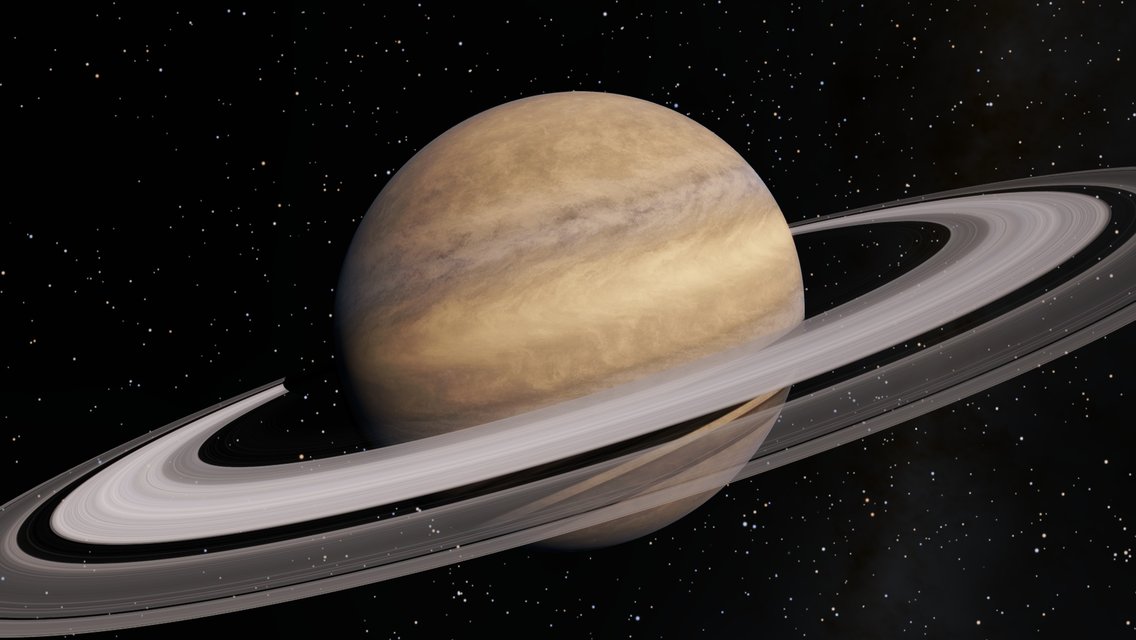
The Planet of Mercury was called so by the Romans, which means the prophet of God for being so close to the sun and it moves around it with high velocity compared to the other planets thus it deserves to be called the prophet of big Gods.
Because of Mercury being close to the Sun, it does not appear all night as for the external planets rather than appearing for a small period of time, which is one hour and 52 minutes as the longest period seen before sunrise or after sunset. The Greek thought that Mercury consists of two different stars thus they called it Apollo when seen in the morning and Hermes when seen in the evening.
The truth is that observing Mercury is not that simple; for being so close to the sun, and the earth sphere absorbs the light coming from Mercury; thus it becomes less clearer and brighter, in addition to the afterglow accompanying sunset, which increases difficulty of observing planets, and those problems made several old astronomers refrain from observing that planet, thus Copernicus did not see it all along his life.
In order for the concerned one to observe Mercury, he must refer to the astronomic schedules and magazines issued by the specialized bodies or computer programs for recognizing the location of Mercury whether morning or evening planet; then determining its location for the sun and height from horizon and it is preferred to use a binocular for observing it. I considered Mercury at the top of my astronomic concerns for several times with the third one in 1993 when I was observing the moon of one of the months and Mercury appeared suddenly in the binocular scope. When I referred to the astronomic schedules I discovered that it is actually the Planet of Mercury and did not stay long in the sky rather than being lost before the dark.
The information discovered about Mercury through the earth observation is not completely beneficial as its image in the telescope is not clear in addition to the tight time of observation for the previously mentioned reasons; that’s why we were not able to discover the reality of that planet but through the American spaceship Mariner-10 that visited Mercury twice in 1974 and 1975, being close to it by 800 kilometers only. It took several studies and conducted various studies for its sphere, magnetic field, surface temperature and period of moving in addition to other information.
Transit of Mercury
The orbit of Mercury tilts by 7 degrees from the circle of horoscopes; that’s why its orbit intersects with that of horoscopes twice a year and in two different times. The first intersection happens on the 8th or 9th of May of each year and the second intersection happens on the 10th or 11th of November.
Sometimes when the planet is in the internal contingency the planet might pass in front of the sun, thus it is seen as a black dot passing from one of the sun sides to exit from the other.
Astronomers found through observing the previous transit cases that the moment of transit starts always before the time determined as per the astronomic calculations by 43 seconds; which is the same period noticed in the progress of Mercury head and that was only justified by Einstein too, who indicated that the space is surrounding the huge masses such as the sun, stars, bodies and black holes; thus space surrounding the sun makes the path longer for arriving Mercury to the sun and that causes the difference of 43 seconds.
Cases of Mercury transit happens around 13 times each century and below a table that indicates cases of transit until 2049 AD
Date of Mercury Transit
| Transit Date | Transit time (GMT) |
| Wednesday 7/5/2003 | 7:52 |
| Wednesday 8/11/2006 | 21:41 |
| Monday 9/5/2016 | 14:57 |
| Monday 11/11/2019 | 15:20 |
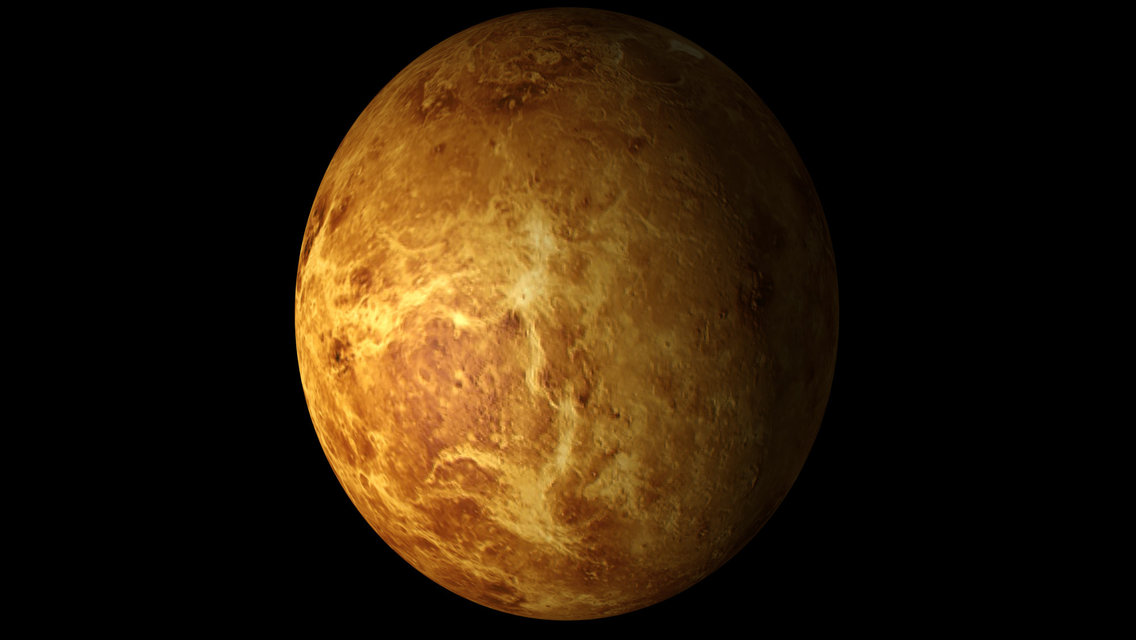
Venus was known long time ago for being very bright in the sky in white shining color, and this made old civilizations rejoice by it; thus gave it the description of love, beauty, money and wealth according to the opinions of astrologists, and it was called by the Roman (Aphrodite), the God of Love, called by the Babylonians (Inanna), called by the Chinese (Tai-Pe), which means the beauty and brightness, while called by the Greek (Venus) the God of love and beauty, which is the most common name for the planet in the modern astronomy.
Venus is the second planet in distance from the sun after Mercury, whereas it is 108.2 million km far, and this distance is not actually the reason for planet brightness rather than the dense clouds surrounding Venus in the heavy gas sphere, thus the reflection of albedo of sunrays is very high and that is the secret in brightness. It is the third bright celestial body after sun and moon, whereas its magnitude in the sky reaches 4.40 and because of Venus brightness we might see shade of bodies through the strong light of Venus as we were standing in a dark place without any light.
Since the orbit of Venus is located inside the orbit of earth; i.e. closer to the sun; thus is does not appear but in a relatively short period and two different periods; either in the morning before sunrise close to the east horizon when it is in the west elongation, or in the evening after sunset above the western horizon when it is in the east elongation, and in both cases it is not seen for more than 4 hours when it is in the highest elongation and seeing it in the naked eye especially in the maximum elongation is very easy, and a lot of people become amazed when they see such bright star, even a lot of people used to think it is a UFO.
General features
Venus moves around the sun within 224.71 earth day and by 35.02 km speed per second, as well as moving around itself clockwise, i.e. from east to west, which is a Retrograde Motion contrary to the movement of other planets in addition to Uranus as we will see when talking about it. The day of Venus reaches 243.16 earth day; i.e. the difference between the day and year of Venus is almost one day. The diameter of Venus is 12104 km, around 0.951 of that of earth. The size of Venus is 0.86 of earth size, i.e. close to its size, that’s why we call Venus (the Twin planet of earth).
The escape velocity of the planet surface reaches 10.36 km per second, density reaches 5.25 of water density while mass reaches around 0.815 of earth mass. Its axis tilts 3 degrees to its orbit and its orbit tilts to that circle of horoscopes by 3.39 degree. Venus reflects Albedo by 0.76 of the sunrays, while temperature reaches 480 degrees while the temperature of Venus sphere reaches 33 degrees only.
Venus Transit
The first one seeing Venus transit in front of the sun is the Arabian astronomer Al-Farabi in 910 AD from Kazakhstan, then Johannes Kepler was able to mathematically predict transit of Venus in front of the sun on 6 December 1631 AD, but no one observed that transit.
The English astronomic amateur Garcia Horrocks was able to predict the transit that took place in 1639 AD, and Horrocks was able to observe the predicted transit, thus he was the first one predicting and observing the transit. Through transit he was able to measure the distance of earth from the sun and found it 58 million mile, noting that the modern measurement is 93 million mile. Mr. Edmond Halley was able in 1716 AD to set his method in measuring the distance of earth from the sun in a specific research prepared for it, through measuring Venus transit angle from two different points with long distance, and this experience was done for the transit in 1761 AD and the other one in 1769 AD. The orbit of Venus tilts to the circle of horoscopes by 3 degrees, thus transit only takes place in regular period every 243 years, consisting of four intervals ranging in length; short ones are 8 years and long ones are 121.5 and 105.5 years, and the next transit will be on the eighth of June 2004 while the following one will happen after eight years in 2012
Date of Venus Transit
| Hour of equal transit (GMT timing) | Date of transit |
| 8:19 | 8/6/2004 |
| 1:28 | 6/6/2012 |
| 2:48 | 11/12/2117 |
| 16:1 | 8/12/2125 |
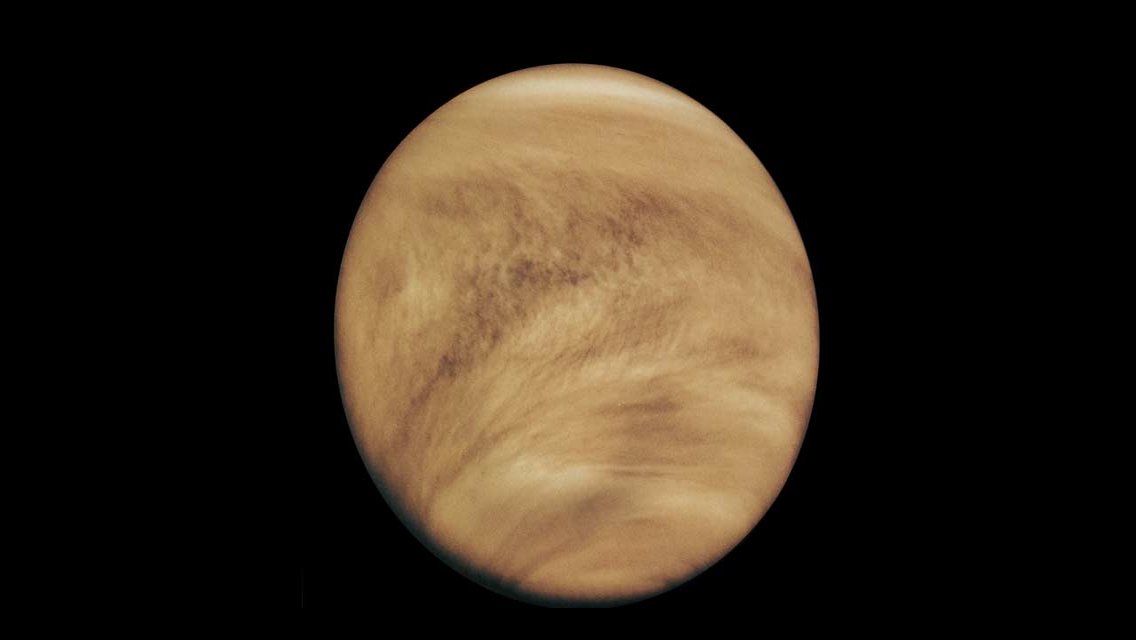
The earth is distinguished of several unique features from other planets in the Solar System or even in any place of the universe with the life on its surface. All studies conducted by the spaceships on the planets did not indicate having any life but that on earth. The radio messages sent by scientists sent to stars in all sides of the galaxy where it is expected to have life did not obtain replies to prove having neighbors that we expect to be in universe to be convinced of not being alone as we imagine.
Life did not exist on earth by coincidence rather than having all proper conditions and environment for fulfilling life on its surface; such as water, air, medium temperature, proper sphere, four seasons and other life requirements.
General Features
Earth comes in the third rank in distance from the sun after Mercury and Venus and it is on average 149.6 million kilometers far, which is the astronomical unit. The perihelion is 147.1 million kilometers from the sun while the aphelion is 152.1 km. earth moves around its axis – daily – within 23 hours, 56 minutes and 4.091 seconds, and moves around the sun – star year- within 365 days, 6 hours, 9 minutes and 9.5 seconds, with the equinox reaching 365 days, 5 hours, 48 minutes and 46 seconds.
The earth radius is 6378 km and circumference is 24069 km; thus the earth is located in the fifth rank in size within the solar system after Jupiter, Uranus, Neptune and Saturn. The earth moving axis tilts around its axis by 23 degree and 26 minutes; which causes the known four seasons, which are the requirements for sustainable life on earth. Earth density is 5.52 of water, which is the highest in all nine planets, while the escape velocity from surface reaches 11.2 per second.
The Internal Composition
The geological studies of earth, which are usually done through the explosions done by the bounce of sound waves from the internal geological layers; indicated that the earth geology is separated into the following main sections:
- Nucleus
Earth nucleus consists of a small internal nucleus with a radius of 1171 km and it is in the solid state as a result of the huge pressure from the external geological layers. It consists of a mixture from iron and nickel in addition to small quantities of silicon. There is also the external section of nucleus that reaches 2300 km in thickness and it is in the liquid state, which is also responsible for the earth magnetic field; whereas it is caused by the movement of that layer resulting from earth moving around itself.
- Mantle
Which is the layer surrounding earth nucleus with the thickness of 2850 km, it consists of iron and magnesium silicate of malleable form. Iron makes around 89% of that layer while magnesium consists only 11%, and in case of having cracks above that layer; then the liquid material will go up towards the earth surface to form volcanos.
- Lithosphere
It is the rocky layer of the earth with the thickness of around 100 kilometers and it increases of thickness at the mountains and decreases at the lower areas or in seas and oceans. The sphere mainly consist of various minerals such as the silicate of potassium, aluminum, calcium and iron.
The problem of human currently is that the percentage of CO2 emissions in atmosphere increases because of having numerous machineries, vehicles and factories, as the quantity of fuel combustion was 5 thousand tons at the beginning of eighties and that quantity of fuel emitted around 20 thousand million tons of CO2, which means increasing earth temperature average. Accordingly huge amounts of ice melted in both northern and southern pole, which caused increased level of water in oceans by 15 cm from that measured at the beginning of the twentieth century. Scientists expect that the level of water will increase in seas and oceans to reach around five meters, which means that huge touristic cities such as Tokyo, Paris, Bangladesh and Holland will be drowning.
The other problem leading to disorder in nature and threatening life and environment is using the Chlorofluorocarbon gas, which is considered the most gas affecting Ozone layer that protects creatures from the UV rays as mentioned. We use that gas in industries such as cosmetics, insecticides and refrigerators; that is why we notice erosion in the ozone layer in the photos taken for the gas sphere through the spaceships concerned of studying the earth gas sphere.
As a result of that erosion in ozone layer; the modern developed countries prevented using that gas in the mentioned industries to avoid threatening life and environment; thus they use alternative gases that are ozone layer-friendly; but unfortunately we find several factories and countries not respecting the environment and are still emitting dangerous gases in the earth sphere without being concerned of the future and safety on the planet, in addition to USA objecting to commit to environment protection conventions, which aggravated the problem.
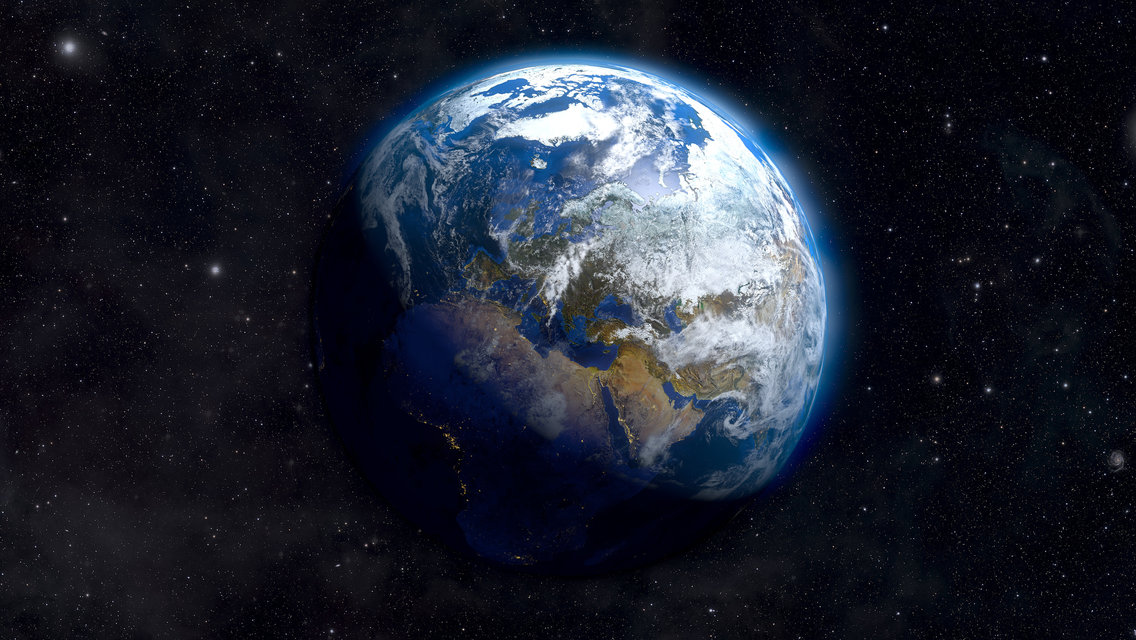
The Surface of Mars is distinguished from other planets of having Iron Oxide widely spread on its surface; thus it appears in red, and increases being bright and red whenever gets closer to earth. This phenomenon happens once every two years; when Mars meets the earth on the same line and it increases every 15 years where Mars becomes in the closest point from earth, and it becomes around 56 million kilometers far from earth; noting that the distance between Mars and the earth when getting closer does not exceed 101 million kilometers.
Old civilizations were impacted by the red color of Mars and they related it to blood, war and death; thus he Sumerians called it NERGAL; which means the God of War, the Greek called it AREZ, which also means the God of War; while the Romans called it Mars, which means the God of war and Horror, and the latter is the one used in the modern astronomy.
General Features
Mercury comes in the fourth rank in distance from the sun with the average of 227.9 million kilometers; i.e. around 1.523 astronomic unit. Mars is the seventh planet in size and it is followed by Mercury and Pluto.
Mars moves around itself within 24 hours, 37 minutes and 23 seconds and moves around the sun within 687 earth days; i.e. the year of Mars equals two doubles the year of earth by 1.88 percent. The planet moving axis around the sun tilts 24 degrees, which is close to that of earth, which is 23.5 degrees, and that made the four seasons be formed on Mars as on the earth.
The diameters of Mars reaches 6794 kilometers and density reaches 3.94 grams per cubic centimeter; mass reaches 0.11 only from earth mass while gravity does not exceed 0.379 of that of the earth because of the low density and small size. Mars has a very limited magnetic field compared to the one of the earth, which has increased magnetic field by 1000 times from the field of Mars.
Searching for Life on Mars
Channels, seas and continents appearing as lines on the surface of Mars caused wide argument in both the eighteenth and nineteenth centuries and the beginning of the twentieth century about the potential of having an advanced civilization on Mars and that the channels were dug by the advanced civilizations for irrigating lands and plants on the planet; and that is why astronomers took the issue of searching that civilization seriously and started to study Mars as they might observe some of that civilization.
The American astronomer P. Lowell (1855 – 1916) is considered one of the most ones concerned of studying Mars and the Martian civilization. He built a perfect astronomic observatory in1894 in the desert of Arizona far from the lighting and pollution of cities, thus the sky was clear for observation.
After fifteen years of observation; Lowell took thousands of photos for the surface of Mars and he continued observing and studying channels and their changing form from time to time along with the change of Martian seasons through the transformation of polar tops; thus he was convinced that there is an advanced civilization on Mars. Long time after that, Lowell wrote a book titled (Mars) that was issued in 1894, which was followed by other books; whereas in 1906 he wrote a comprehensive book titled “Mars Canal” then a third one was issued titled “Life on Mars” in 1908.
During Lowell being occupied of observing Mars, an interesting novel about the Martian civilization titled “The World War” was wrote by the English author H. G. Wells (1866 – 1946), where he imagined that the residents of Mars with advanced technology attacked the earth after Mars is deserted and became not proper for living; thus they had to occupy the earth where there is water, seas, green lands and other benefits, but Martians were defeated because of the bacteria, which their bodies were not able to resist or even find a healing medication.
The novel (The World War) amazed the director O. Welles, thus he decided to stream it as radio episodes in the New Jersey state radio channel and he was creative in his genius method of direction, which made people think that it is correct and that residents of Mars will be invading the earth and they ran towards the high mountains far from the city. People were not calmed down unless at the end of the episodes, when the director apologized to the residents of New Jersey for streaming the novel and marking them afraid as he did not expect that people will actually believe it!
The issue of searching life on Mars kept being discussed until the American spaceship Viking-1 landed on the planet and conducted several trials on its soil and took a lot of photos searching for the expected Martian life.
Studies indicated that the channels observed by astronomers and amateurs are only illusions resulting from hitting sand storms of the surface, holding dust and sand and forming grooves like channels, and they are not canals of water or seas. The photos indicated that the surface of Mars is a desert that is free of any form of live, and there are no buildings, huge trees, strange animals or smart creatures like the human on earth. Despite that, the ship took some photos of human faces sculpted on rocks, called the faces of Mars, with forms of pyramids similar to the Egyptian ones!
We do not know exactly whether the Martian faces were formed by a smart creature who lived on the planet in the past or that the factors of erosion such as the sand storms caused those faces; as the spaceships or human expected to land on Mars in the future will be discovering the fact of those faces and pyramids.
Viking-1 conducted three trials on the soil of Mars, which were expected to reveal microscopic creatures after failing to look for an advanced life of even huge trees, after the ship took some soil and examined it through the lab therein for conducting trials on the creatures in it.
The ship first started heating the soil to a high degree to lose 1% of its weight, which is thought to be water evaporating by heat. The trial depends on heating CO2 – 14 shining under light and in case of having any creatures they will absorb the CO2 and enter it into their tissues then it will emit the CO2, then the soil will be heated thus the carbon compositions will be deconstructed in soil, which will produce CO2 and will help to know whether there is CO2 – 14 or not. If the latter gas exists then it means that there are creatures in the soil; and when the trial was conducted it indicated having CO2, which means that there is life in the soil.
The ship conducted the second trial depending on chemical reaction, where the soil receives chemicals containing simple carbon, just like the one on earth, dissolved in water to be introduced into its tissues, then compositions will be separated and produce gases consisting of carbon atoms. In case of conducting the trial there won’t be any emission of the gases consisting carbon-14 in case the soil is free of any creatures; but when conducting the trial the result was positive and the labs registered having carbon-14 atoms.
The third trial depended on the method of exchanging gases; which is a natural process continuously occurring on the earth; whereas the plants consume CO2 and emits O2; while human consumes O2 and emits CO2. When the soil was given an adequate amount of CO2, it emitted a percentage of O2 resulting from the microbes consuming CO2. Despite the positive results of the three tests; the astronomers are not convinced that the trials are accurate and correct; as the percentage of resulting carbon was high and not compatible with the expected logical percentage; thus they justified that increase in carbon rate by the continuous exposure to the UV rays from the sun as Mars does not have a gas sphere; thus the carbon is resulting from the oxidization of Martian gases and not from producing Martian microbes or germs
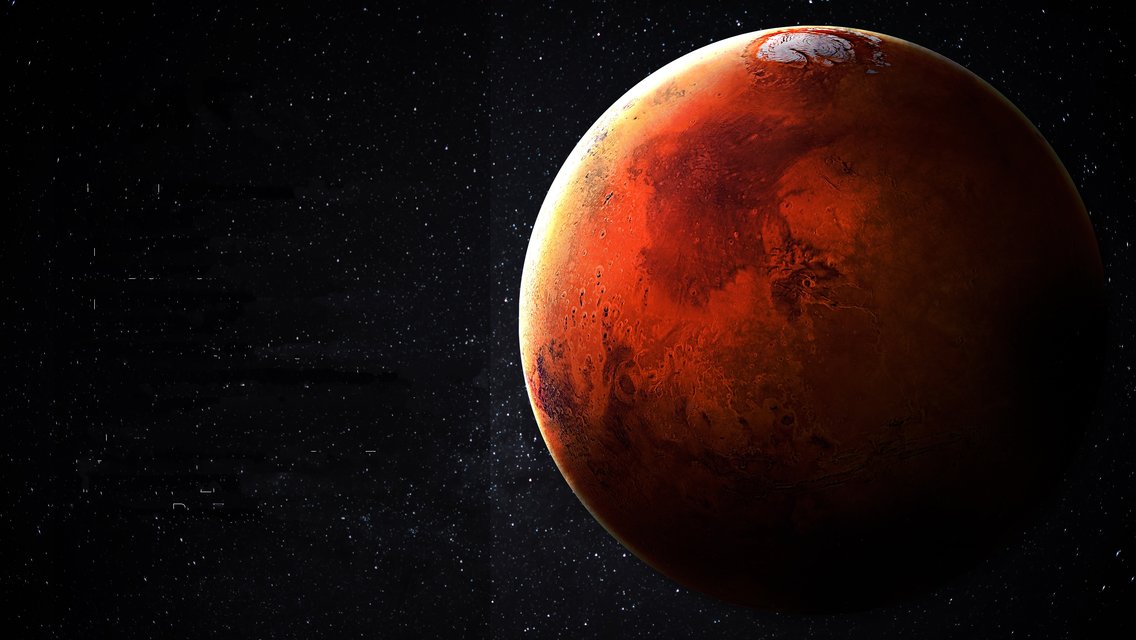
The British astronomic amateur William Herschel was the one who discovered the seventh planet in the solar system on 13 March 1781 AD, when he was observing the Binary stars and coincidently noticed that there is a relatively bright celestial body moving between stars in Geminin. First he thought that the observed star might be a far comet and informed the mathematician astronomers of that, who found out that his orbit is semi-circular and not oval as in the orbits of comets. They also discovered that its orbit is compatible with Bode law in the sequence of plants’ dimensions, accordingly the astronomer Nevil Maskelyne announced discovering Herschel the seventh planet in the solar system.
Herschel called the new planet (Georgious Sidas), then it was called after the name of discoverer Herschel, but that name was changed lastly into Uranus, the Greek God of Sky, to be compatible with the other planets named after Gods.
Uranus was the first planet discovered through astronomer telescopes, although the one with sharp sight may see it in a clear dark sky; whereas its brightness reaches 5.7, noting that the sharp sight might see until the sixth degree. There were two scientists who observed Uranus before Herschel, the first was in the field of the British astronomer Flamsteed in 1690 AD, but he thought it was a normal star, and the second was by Le Monnier, who saw it 12 times without paying any attention to it.
- General Features
Uranus is 2807 million kilometers far from the Sun and it comes in the third rank in size after Jupiter and Saturn, with the diameter of 51800 kilometers and around 67 times bigger that earth.
Uranus moves around its axis within 17 hours and 18 minutes, and moves around the sun in 84 earth year; thus it moves towards the east by 4 degrees every year and stays in each horoscope for around 5 years. The orbit of Uranus tilts on the horoscopes circles by 0.77 degree, this means that its orbit is very close to the horoscope line in the sky. It is 1.27 of water density, while its mass reaches 14.6 times that of the earth, surface gravity is around 1.17 of the earth’s gravity, escape velocity is 22.5 kilometers per second, surface temperature reaches -214, while the value of brightness seen from earth is 5.6.
Within strange features of Uranus is the strong declination of its orbit to that of around the sun, which is 98 degrees; i.e. its north pole is located under its orbit around the sun by 8 degrees, which makes the sunrays directing vertically on one of the poles in specific periods, and one of the poles will be directing towards the earth repeatedly. The declination in rotation axis makes Uranus moving around itself in a Retrograde Motion, thus it is rotating around itself from the east towards the west and not the opposite as in the other planets except for Venus. Accordingly Uranus is the second planet in the solar system moving around itself in a reverse manner and if one person would be standing for one day at its top then he will see the sun rising from the west and setting in the east!
* Rings’ system
On the tenth of March 1977, astronomers were preparing to study the hiding of a star called SAO 158687 through a specific observatory set in a place called Kuiper Airborne that was flying above the Indian Ocean, and Uranus back then was in the Libra horoscope and the star to be hidden by Uranus was of the tenth circle; thus the process of hiding star behind one of the planets is very beneficial in studying the gas sphere and its thickness in addition to planet diameter, distance from earth and period of moving around the sun.
40 minutes before hiding taking place; the star brightness suddenly fainted, which was not expected in the astronomic calculations. Astronomer thought that some clouds are hiding the star behind in the sky; but the meteorological devices in the same plane confirmed not having any clouds and then that faint repeated 4 minutes after the first one.
Such repeated faint of the star before reaching Uranus was resulting from the rings surrounding the plant, which hide the star and that was announced by the team head James Elliot and confirmed after repetition of the same star in the opposite side of planet.
Astronomers discovered through that hiding having five rings, and gave them Greek letters to distinguish them, with the following order from inside to outside: (Alpha, Beta, Gama, Delta and Epsilon). Other hiding cases were observed for stars behind Uranus on 23rd December 1977 and on 4th April 1978, then on 10th April 1978, which resulted in discovering four other rings, thus became 9 rings, and when Voyager-2 visited the planet in 1986AD it discovered the tenth ring
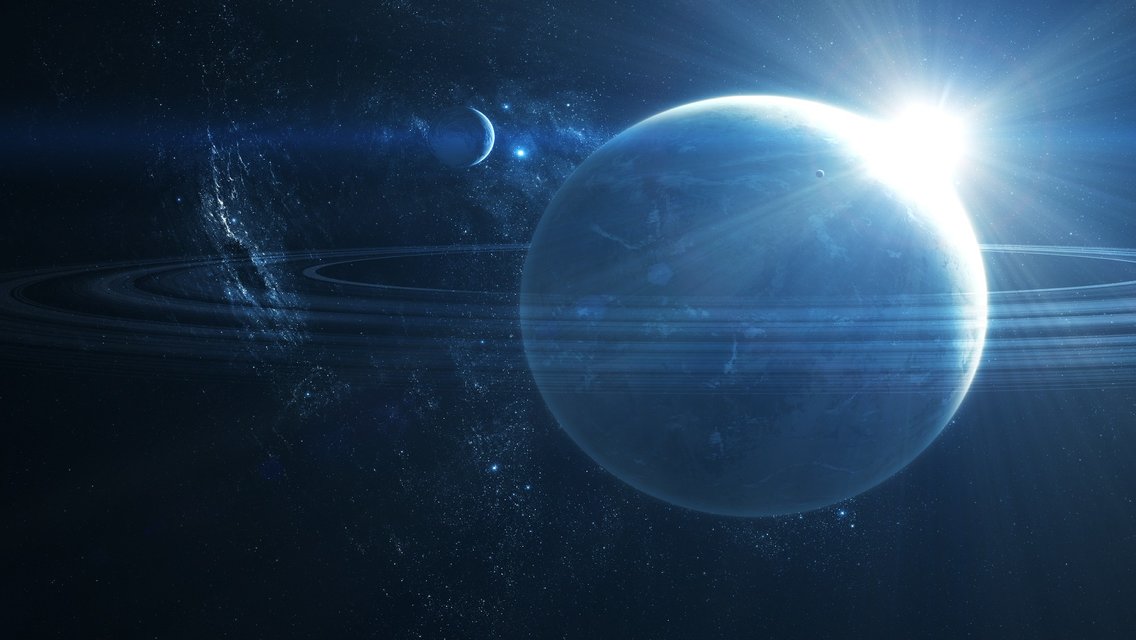
After discovering Uranus, it was discovered that its orbit has a clear deviation in movement; whereas it completely deviates from its calculated orbit contrary to Newton gravity laws, which makes astronomers think that having an eighth planet affect Uranus with its gravity and that leads to deviation in Uranus orbit, thus astronomers started looking for that anonymous planet.
Various astronomers started looking for the anonymous planet based on astronomic calculations; including the British scientist John Adams, who calculated the value of deviation in the orbit of Uranus in 1845 AD when he was a university student, and discovered that the potential of having an eighth planet affect the gravity of Uranus became confirmed.
At the same time, the French mathematician Urbain Le Verrier was calculating the potential of having an eighth planet but separately from John Adams, and he obtained the same results of the British scientist; but both of them did not pay attention to those calculations and no astronomic observatories were directed towards the sky in order to discover the potential planet.
Le Verrier contacted the astronomer Johan Galle and asked him to look for the potential planet after determining a location indicated by astronomic calculations, and after one hour of observation in Berlin, Johan Galle and his assistant Heinrich d'Arrest discovered the eighth planet on 23 September 1846 AD, and this recovered trust in Newton rule of gravity, thus the solar systems expanded, and that planet was called Neptune, which is the Roman God of the Sea
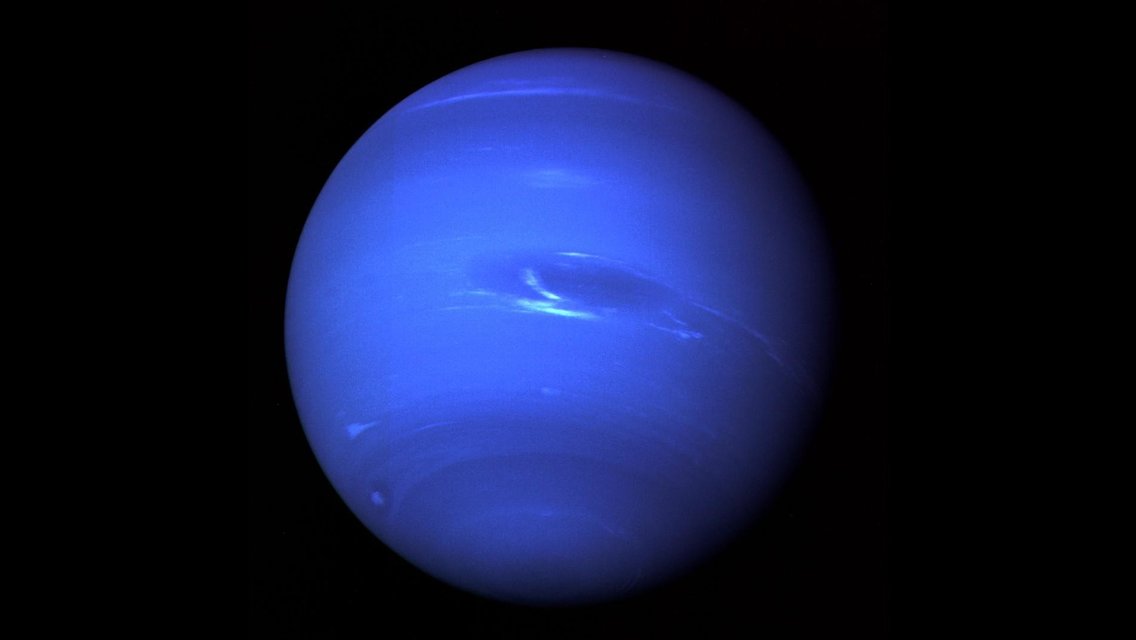
Discovering Neptune did not solve the issue of deviation in the orbit of Uranus; whereas the percentage of change is still only 2% and was not solved by discovering Neptune. This motivated astronomers to think of having a ninth planet moving around the sun that is farther than Neptune and affecting with its gravity on the movement of both Uranus and Neptune; thus discovering this planet that is expected to exist will deficiently solve the issue of Uranus. Some astronomers objected the idea of having a ninth planet back then with the evidence is that the reason of deviation in the movement of Uranus is resulting from a deficiency in the accuracy of earth observation and not in the movement of planets.
Both astronomers Percival Lowell and William Pickering were within the most enthusiast scientists to look for the ninth planet expected back then and they were calculating its location separately. Pickering called the ninth planet before discovery as Planet O.
Lowell faced several problems in his sequenced calculations for the planet Neptune and the ninth expected one; whereas he expected that the ninth planet will be very far from the sun, which means that its impact on Uranus will be weak and will not solve the problem of Uranus. The planet will also be very faint; as the sky contains around 20 million stars with similar brightness as Pluto; which makes observing Pluto between them very difficult. The movement of Pluto is very slow behind the stars and increases the difficulty of observation while needing long time for shooting and following its movement between the surrounding stars. Looking for Pluto is similar to looking for a needle in a haystack.
Lowell was not frustrated from looking for the planet O, although of being hard to discover, he continued looking for it from 1905 until his death on 12 November 1916, and left his big observatory in Flagstaff in Arizona, USA, in addition to a huge wealth exceeding one million dollars and his wife claimed selling the observatory and getting its price, thus it was left for long time without being used.
The observatory of Lowell was left until 1929 AD, when Lowell family bought a lens with the diameter of 13 inch and added it to the observatory to revive it and keep looking for the planet O.
Clyde Tombaugh the astronomy amateur, who did not have any previous experience in the field, with only secondary school degree, leased the observatory to search for the lost planet as he was obsessed of that.
Tombaugh started shooting the stars located in the Gemini, and he was able to shoot the ninth planet by coincidence for three times without noticing, then he re-scanned the entire horoscopes until returning to Gemini again and when he started observing the photos taken on 18th February 19830 he noticed that there is a celestial body changing its location between stars with a very slow motion while confirming being very far. This indicates that it is not an asteroid rather than a planet moving around the sun; thus he ordered the astronomers back then to go to Harvard College in order to ensure the movement of that body and confirm being a planet, and announced his discovery while considering it a planet that is actually moving around the sun in the ninth rank in the solar system.
Several suggestions were made for the nomination of the new planet; the first was provided by Constance; Percival Lowell’s wife; where she suggested to call is Zeus after the Greek Greatest God, then she suggested to call it after her husband Percival Lowell, and then her own name; until it was called Pluto after the Roman God of the underworld (the world of death). The funny thing about that is that this name was suggested by an 11 year old girl called Venetia Burney, a student in Oxford University who was very concerned of the old myths and Gods
